Disclosure: This article contains affiliate links. We may earn a commission from purchases at no extra cost to you, which helps our travel content.
When most people think of Rio de Janeiro, images of Copacabana's golden sands and the rhythmic sway of samba dancers immediately come to mind. But having just returned from a week-long winter escape to this Brazilian metropolis, I'm here to tell you that Rio's true soul might actually reside in its towering peaks and forest-covered mountains. As someone who spends most days caring for others in Laredo's flat terrain, the vertical challenge of Rio's mountains called to me like an old friend. The juxtaposition of urban sprawl against dramatic natural formations creates a photographer's paradise that rivals anything I've captured in the Rockies or Pacific Northwest. And while my grandmother's Italian hometown will always hold a special place in my heart, Rio's unique blend of culture, cuisine, and cloud-touching summits has earned its own chapter in my travel story.
Tijuca National Park: The Urban Jungle
My first hiking day began with a sunrise journey into Tijuca National Park, the world's largest urban forest. As a frequent visitor to North American national parks, I was skeptical about how 'wild' this experience would be. I couldn't have been more wrong.
Tijuca is a miracle of reforestation—once cleared for coffee plantations in the 1800s, it's now a thriving rainforest ecosystem completely surrounded by one of South America's largest cities. The juxtaposition is mind-bending. One moment you're navigating Rio's bustling streets, and 20 minutes later, you're enveloped in pristine Atlantic Rainforest with howler monkeys providing the soundtrack.
I opted for the Pico da Tijuca trail, the park's highest point at 1,021 meters. The 3-hour round trip ascent winds through dense vegetation before opening to panoramic views that showcase Rio's geographic splendor—mountains plunging into azure waters, the iconic Christ the Redeemer statue appearing surprisingly small from this vantage point.
While hiking, I met Paulo, a local guide who shared that winter (June-August) is actually the ideal time for these hikes. The reduced humidity means clearer views and more comfortable temperatures hovering around 75°F (24°C). As someone who's hiked in both the sticky summers of Quebec and the dry heat of New Mexico, I can confirm Rio's winter hiking conditions are nearly perfect.
For this trek, my hiking daypack proved invaluable—light enough for quick movement but spacious enough for my camera gear, 3 liters of water (you'll need it), and a light rain shell for the occasional afternoon shower.
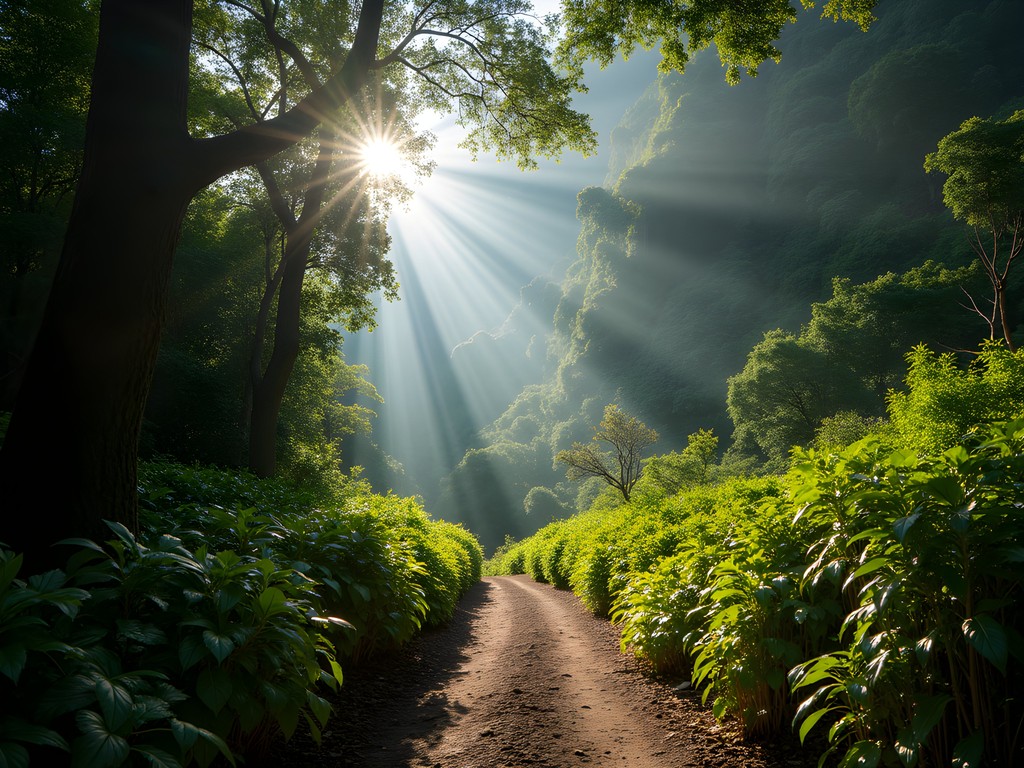
💡 Pro Tips
- Start early (7-8am) to avoid afternoon thunderstorms common even in winter
- Hire a local guide if it's your first time—the trail markings can be inconsistent
- Look for toucans near the Vista Chinesa viewpoint—they're surprisingly common here
Pedra da Gávea: The Ultimate Challenge
If there's one hike that separates the casual tourists from the dedicated mountain lovers in Rio, it's Pedra da Gávea. Standing at 842 meters, this monolithic mountain features one of the most rewarding—and challenging—day hikes I've ever completed.
Let me be clear: this is not a hike for beginners. The 3-4 hour ascent (one way) includes a section called Carrasqueira—a near-vertical rock face that requires basic climbing techniques. Having tackled some moderate routes in the Canadian Rockies, I still found this section intimidating, especially considering the absence of safety equipment on the trail.
After consulting local hiking forums, I connected with a guide named Marcelo through Rio Hiking Club, who provided climbing equipment and invaluable knowledge about the mountain's unique geology. The extra cost (about $70 USD) was worth every cent for both safety and enrichment.
The trail begins in the Barra da Tijuca neighborhood, winding through dense Atlantic forest before emerging onto increasingly exposed rock faces. As we climbed higher, the vegetation transitioned dramatically—from tropical undergrowth to hardy succulents clinging to sun-baked rock.
The final summit push rewards you with what might be the most spectacular urban vista on Earth. Unlike the sanitized views from Christ the Redeemer, Pedra da Gávea offers a 360° panorama where you can simultaneously see the upscale beaches of Barra, the favelas climbing the hillsides, the lagoons reflecting the sky, and the endless Atlantic stretching to the horizon. It's a view that captures Rio's stark contrasts and breathtaking beauty in one sweeping glance.
For this challenging ascent, proper footwear is non-negotiable. My hiking boots provided the grip and ankle support essential for the technical sections, while still being lightweight enough for the humid conditions.
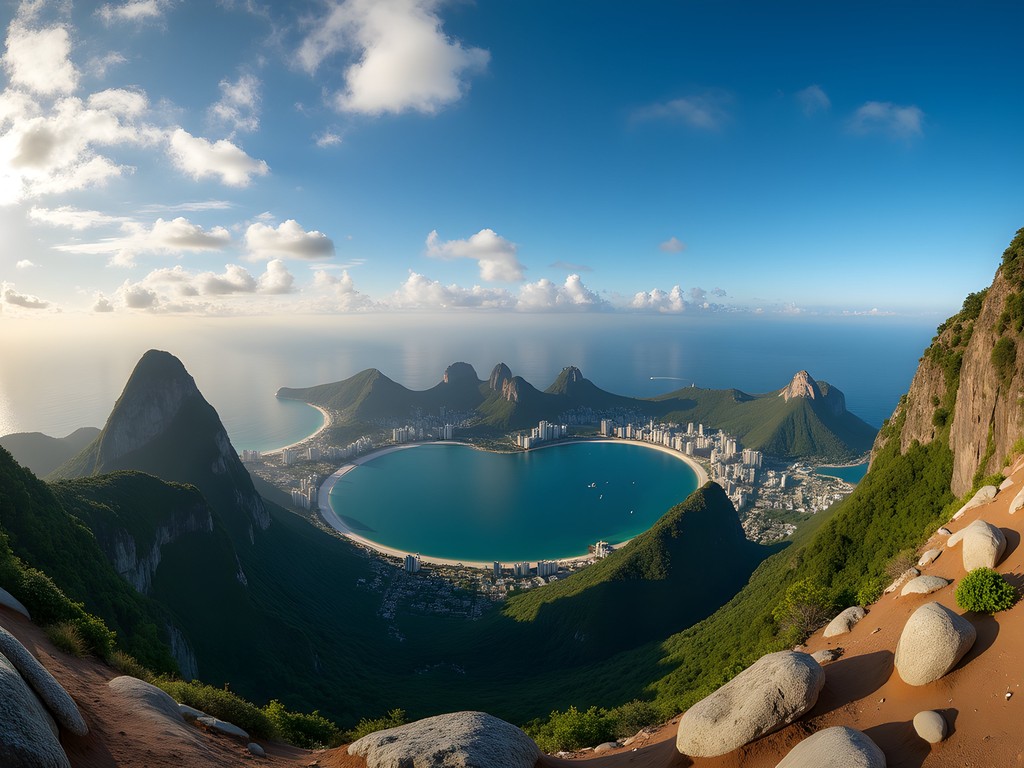
💡 Pro Tips
- NEVER attempt this hike alone or without a guide if it's your first time
- Start no later than 7am to ensure you're not descending in darkness
- Bring at least 3 liters of water and high-energy snacks—there's nowhere to refill on the trail
Two Brothers Mountain: The Photographer's Dream
While less technically challenging than Pedra da Gávea, the hike to Dois Irmãos (Two Brothers Mountain) offered what was perhaps my favorite photography experience in Rio. This distinctive twin-peaked mountain frames iconic postcard shots of Ipanema and Leblon beaches.
What makes this hike unique is its starting point: the Vidigal favela. As someone who approaches travel with both caution and cultural respect, I initially hesitated. However, local photographers in my hostel assured me this route is well-established and brings valuable tourism income to the community.
I arranged a morning hike with a resident guide named Thiago through my hostel. We began by taking a local van up through the winding streets of Vidigal (saving about 30 minutes of steep uphill walking), then followed a well-maintained trail through patches of forest to the summit.
The 45-minute hike is relatively straightforward, with only the final section requiring some light scrambling. But the real magic happens at sunrise, when the first light hits Ipanema Beach and the lagoons begin to shimmer like molten gold. As a photographer who cut his teeth capturing the subtle light of Canadian mountains, Rio's dramatic interplay of water, urban landscapes, and jagged peaks presented entirely new compositional challenges.
My travel tripod proved essential here—lightweight enough to carry up the mountain but stable enough for the long exposures I wanted in the changing morning light. The carbon fiber version is an investment, but for serious landscape photographers, the weight savings on hikes like this make it worthwhile.
What struck me most was the social atmosphere at the summit. Unlike many North American hiking experiences where solitude is prized, Two Brothers at sunrise becomes a community event. Local hikers brought thermoses of coffee to share, photographers exchanged tips on the best angles, and everyone collectively gasped as the sun finally crested the horizon, illuminating Sugarloaf Mountain in the distance.
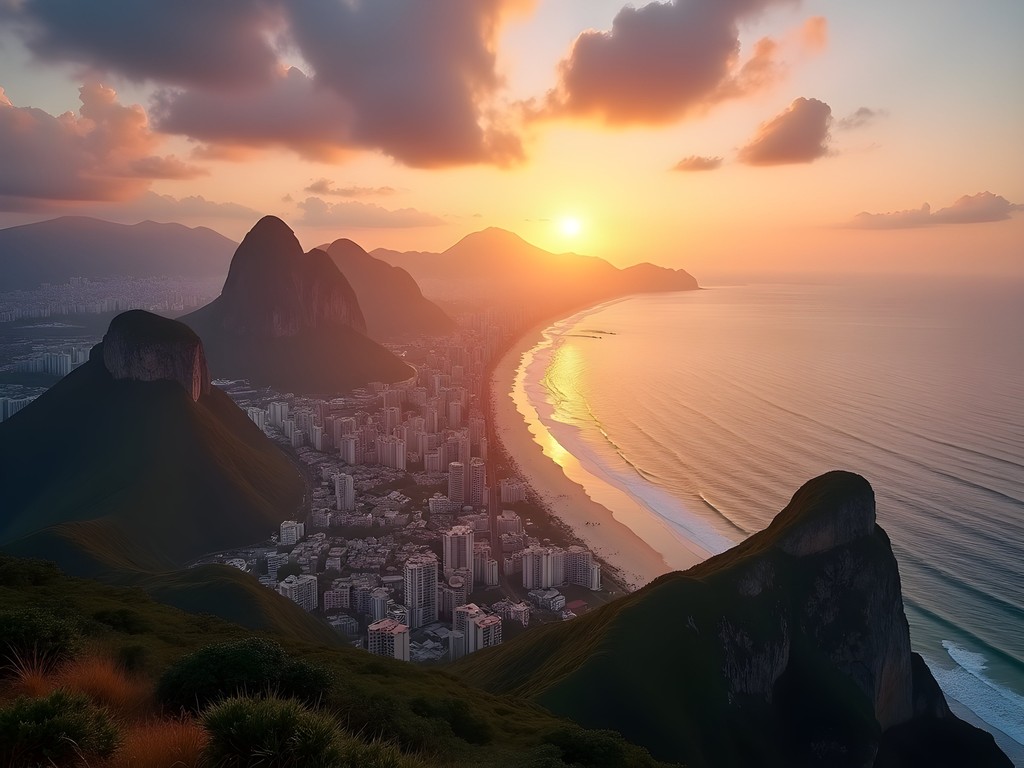
💡 Pro Tips
- Arrange your guide the day before—most hostels have connections with Vidigal residents who guide regularly
- For photographers: arrive 45 minutes before official sunrise to capture the blue hour
- Bring small bills to purchase coconut water from vendors at the trailhead after your descent
Corcovado Hiking Trail: Beyond Christ the Redeemer
Most tourists visit Christ the Redeemer by train or van, but few realize you can hike to this iconic landmark through Tijuca Forest. As someone who believes the journey often matters more than the destination, I opted for the 2.5-hour trail ascending Corcovado Mountain.
The Parque Lage to Christ the Redeemer trail begins at the stunning visual arts school in Jardim Botânico neighborhood. The historic mansion with its central pool (you might recognize it from Snoop Dogg and Pharrell's 'Beautiful' music video) provides a surreal starting point for what becomes an increasingly challenging hike.
The trail ascends steeply through sections of stone steps, natural pathways, and occasionally unclear routes. While not technically difficult, the consistent incline and humidity make it physically demanding. The middle section passes through some of the densest sections of Tijuca Forest, where I encountered families of marmoset monkeys and an astounding variety of butterflies that would make any wildlife photographer reach for their macro lens.
What struck me most was the transition—beginning in the manicured gardens of Parque Lage, passing through primeval-feeling rainforest, and emerging suddenly into the crowded tourist platform beneath one of the world's most recognized monuments. It's a journey that encapsulates Rio's contrasts in a single hike.
Despite hiking regularly in the Rockies, I found myself grateful for my trekking poles on the descent. The combination of steep terrain and occasionally slippery surfaces made these adjustable poles invaluable for maintaining stability and reducing impact on my knees.
A note of caution: while generally safe during daylight hours, this trail has experienced occasional robberies. I hiked with two Brazilian friends I'd met during a food photography workshop earlier in the week, which provided both safety and cultural insights I'd have missed hiking alone. If you're traveling solo, consider joining one of the organized hiking groups that depart regularly from Copacabana hostels.
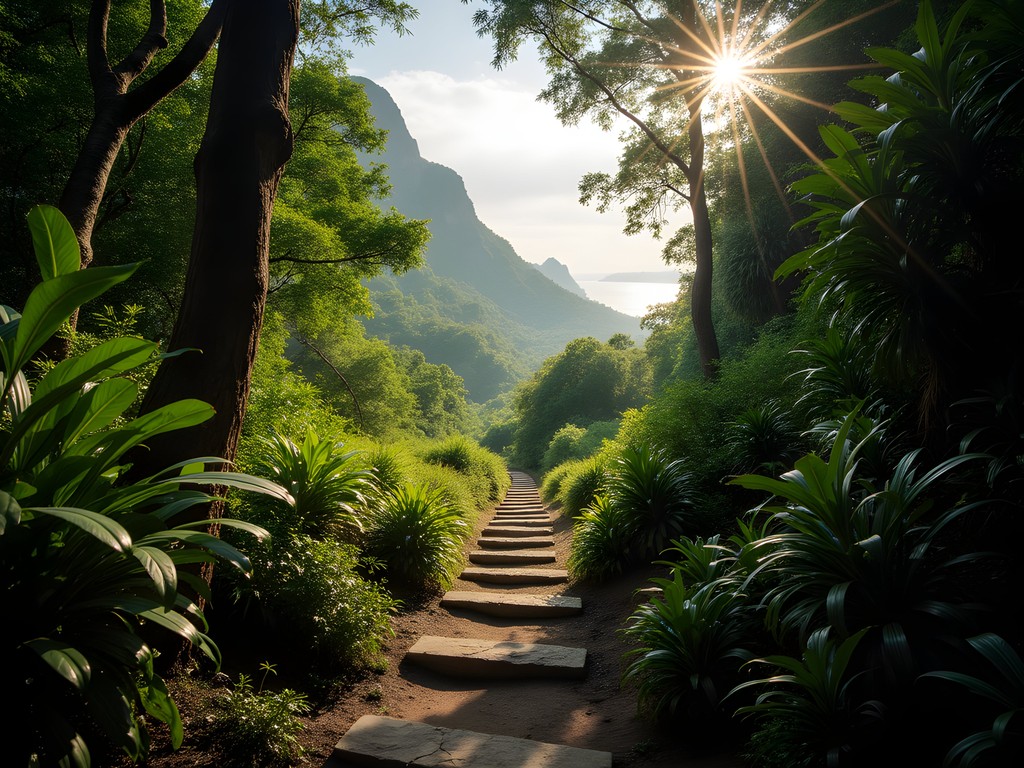
💡 Pro Tips
- Start no later than 9am to avoid both afternoon heat and potential afternoon thunderstorms
- Purchase your Christ the Redeemer entrance ticket online in advance to avoid lines at the top
- Take the train or van down rather than hiking back—your knees will thank you, and it provides a different perspective
Sugarloaf Mountain: The Unexpected Hike
Most visitors experience Sugarloaf Mountain (Pão de Açúcar) exclusively via the famous cable car, but there's a little-known hiking trail that ascends the first mountain in the formation, Morro da Urca. As someone who values finding alternative perspectives in popular destinations, this hike became one of my favorite Rio experiences.
The trail begins inconspicuously near Praia Vermelha beach in Urca neighborhood. Unlike Rio's other mountain hikes, this one is relatively gentle, with a clear path and moderate incline making it accessible to hikers of various fitness levels. The 30-45 minute ascent winds through patches of Atlantic forest with frequent clearings offering progressively spectacular views of Guanabara Bay and Corcovado Mountain.
What makes this hike special is its accessibility and the reward-to-effort ratio. With minimal exertion compared to Rio's other peaks, you're treated to panoramic views that rival those from the main Sugarloaf summit. From the top of Morro da Urca, you can either take the cable car to continue to Sugarloaf proper or simply enjoy the 360° vistas that include the entrance to Guanabara Bay, the Niterói bridge, and downtown Rio.
As a photographer, I found this location ideal for capturing the changing light over Rio. I stayed through sunset and into blue hour, when the city lights begin to twinkle and the remaining daylight casts everything in ethereal blue tones. My camera cleaning kit proved essential here—the combination of sea spray, dust, and humidity creates challenging conditions for camera equipment.
What I didn't expect was the social atmosphere at the summit. Unlike the crowded main Sugarloaf platform, Morro da Urca attracts a mix of in-the-know tourists and local cariocas who come to watch the sunset. I shared a bench with an elderly gentleman named Carlos who told me he's been coming to this spot every Sunday for 40 years to play his guitar as the sun sets. These unplanned human connections often become the memories that outlast even the most spectacular views.
If you time your hike for late afternoon, you can descend via the cable car (last car down is typically around 8:30 PM), saving your knees and experiencing both the natural and mechanical ways to enjoy this iconic landmark.
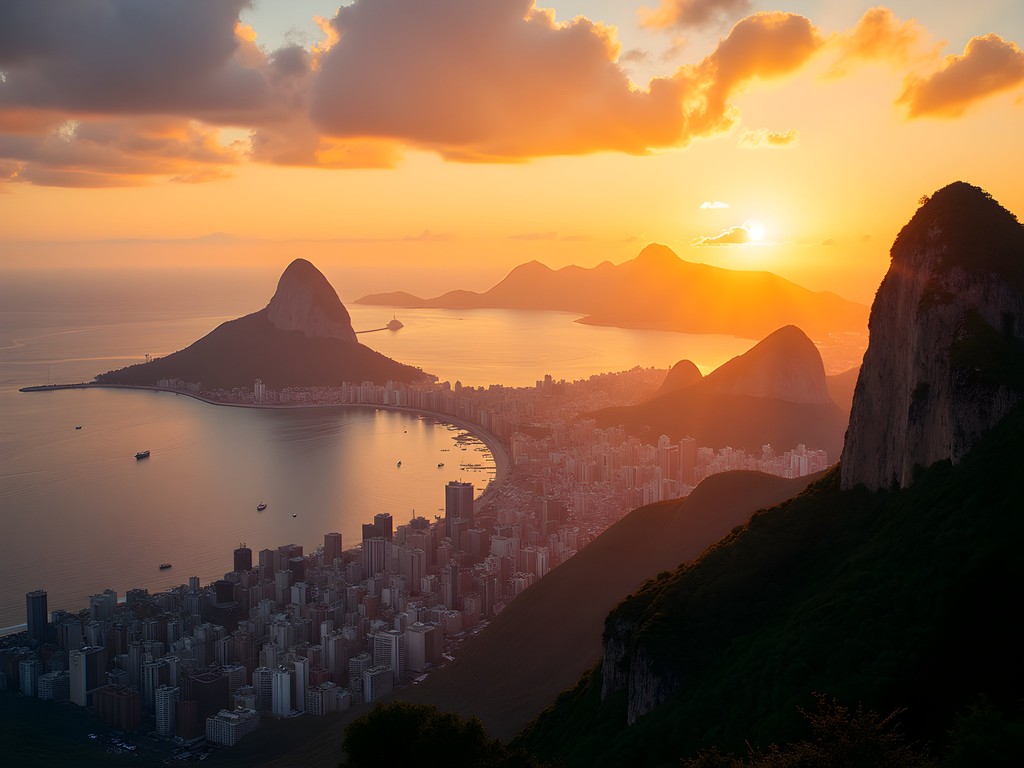
💡 Pro Tips
- The trail entrance can be hard to find—look for the small path starting near the helicopter tour stand at Praia Vermelha
- Bring cash for the one-way cable car ticket down if hiking in the afternoon
- For photographers: this is the perfect spot for blue hour cityscape shots of Rio
Final Thoughts
As my week in Rio drew to a close, I found myself sitting at a small food truck in Lapa, sipping açaí and scrolling through hundreds of photographs that tried—but ultimately failed—to capture the full majesty of Rio's mountains. Like the Italian Alps that first inspired my photography journey with my grandmother, Rio's peaks contain stories that go far beyond their physical presence. They're living witnesses to the city's evolution, offering perspectives that reveal both Rio's breathtaking beauty and its complex social fabric.
For travelers willing to venture beyond the beaches and tourist hotspots, Rio's mountains offer not just spectacular views but a deeper understanding of this multifaceted city. Each summit provides a different lens through which to view Rio—from the wild seclusion of Tijuca to the cultural immersion of Two Brothers. Pack your hiking boots alongside your swimsuit on your next Rio adventure. The beaches will always be there, but it's in the mountains where you'll find Rio's soul.
✨ Key Takeaways
- Winter (June-August) offers ideal hiking conditions with clear skies and moderate temperatures
- Always hike with a local guide or group for both safety and cultural insights
- The less-visited trails often provide the most authentic and rewarding experiences
📋 Practical Information
Best Time to Visit
June to August (Brazilian winter)
Budget Estimate
$70-100 USD per day including accommodations, food, and guided hikes
Recommended Duration
5-7 days
Difficulty Level
Moderate To Challenging

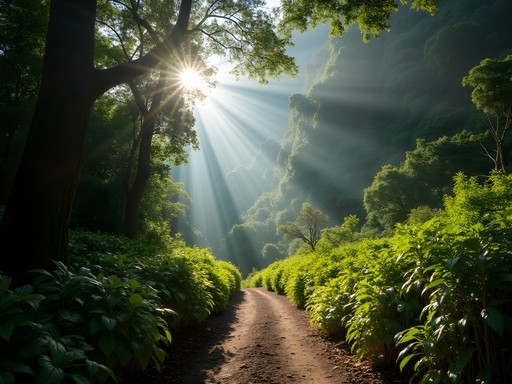
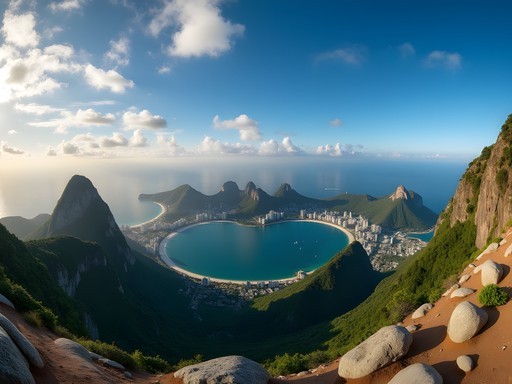
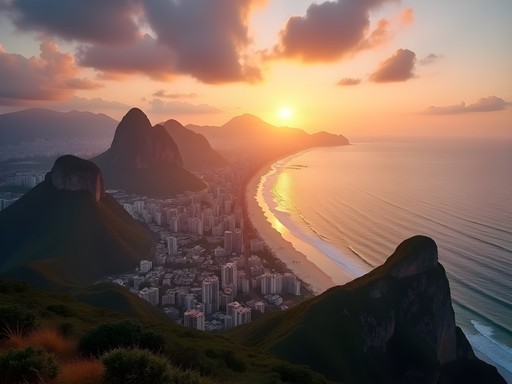
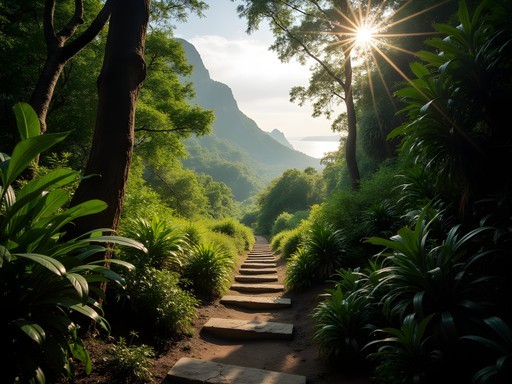





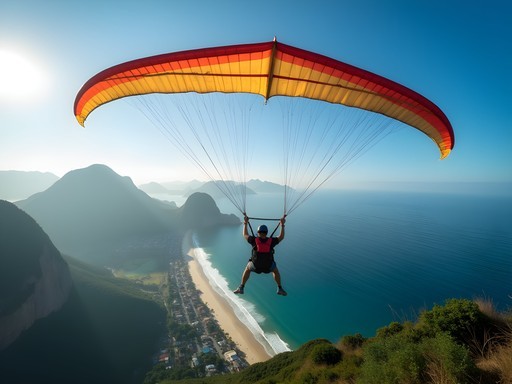

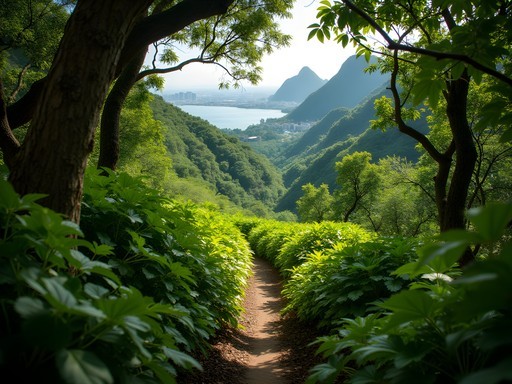
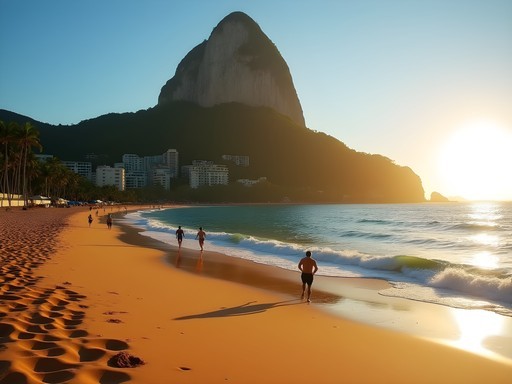
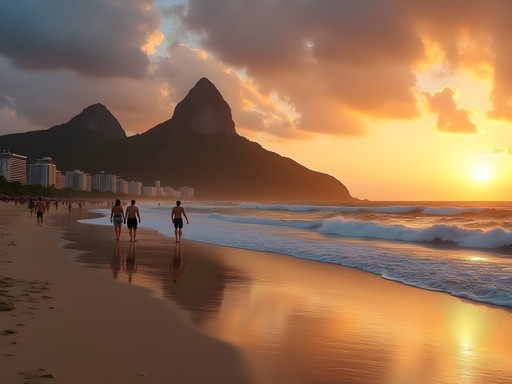

Comments
Taylor Moreau
Benjamin, this is exactly the kind of content that business travelers like myself appreciate. While in Rio for conferences, I often have just a day or half-day to experience something beyond the hotel and meeting rooms. Last quarter, I managed to squeeze in the Two Brothers hike between meetings, and the perspective it gave me on the city was invaluable. The relatively short duration (about 2 hours round trip) makes it perfect for busy schedules. One tip for others: the trailhead can be tricky to find as it starts in Vidigal favela. I found it worthwhile to arrange transportation through my hotel concierge who connected me with a reliable driver familiar with the area. The sunrise views are particularly spectacular if you can manage an early start.
backpackexplorer
Did you need permits for any of these hikes? Going next month!
Benjamin Romano
No special permits needed! Tijuca National Park has an entrance fee (around R$30 last I checked). For Corcovado, if you're hiking up but want to take the train down, buy that ticket in advance online.
starvibes
Going to Rio next month and definitely adding these hikes to my itinerary! Anyone know if it's easy to find those food trucks he mentioned at the end?
greenperson
The food trucks in Lapa are EVERYWHERE on weekend nights! Best açaí I've ever had was from a little blue truck near the Selarón Steps. Perfect after a day of hiking!
vacationace
Great post! I'm heading to Rio in August with my partner and we're moderate hikers at best. Which of these trails would you recommend for beginners? Is the Corcovado trail very steep?
Benjamin Romano
For beginners, I'd suggest the Corcovado trail or parts of Tijuca Forest. Corcovado has some steep sections but it's well-maintained and you can take it slow. Two Brothers is moderate but short. Definitely skip Pedra da Gávea until you're more confident - that one's challenging even for experienced hikers!
vacationace
Perfect, thanks so much! We'll try Corcovado and maybe Tijuca if we're feeling brave.
Taylor Moreau
Excellent write-up, Benjamin. As someone who regularly visits Rio for business, I've made it a point to explore these trails over multiple trips. One tip I'd add for business travelers with limited time: the Corcovado trail can be done in a half-day morning excursion if you're efficient. I'd recommend investing in proper hiking boots with good grip for the sometimes slippery terrain. My hiking boots have served me well on Rio's varied trails. Also worth noting is that mobile reception is surprisingly good on most of these hikes, so you can stay connected if work calls. The Tijuca Forest's biodiversity is particularly impressive - I spotted toucans on my last visit!
Timothy Jenkins
Brilliant write-up, Benjamin! I did the Pedra da Gávea hike last year and it was genuinely one of the most rewarding experiences I've had in South America. That final scramble to the summit is no joke though - I'd definitely emphasize to readers that proper footwear is essential. I used my hiking boots which provided excellent grip on those slippery granite sections. The Tijuca Forest was another highlight - it's incredible to find such biodiversity right within a major city. Did you happen to spot any of the toucans or monkeys during your visit?
Benjamin Romano
Thanks Timothy! You're right about proper footwear - those granite sections can be treacherous. And yes, we spotted several marmosets in Tijuca and even a toucan near the Chinese View lookout! The biodiversity is remarkable for an urban park.
skyway
That Two Brothers view is insane! Added to my bucket list.
vacationchamp
FINALLY someone talking about Rio beyond the beaches! Those Pedra da Gávea views are absolutely STUNNING! Did you feel safe on these trails? I've heard mixed things about hiking in Rio.
Benjamin Romano
Thanks! Safety is a valid concern. I went with local guides for Pedra da Gávea and Tijuca, but Two Brothers was fine with just friends. Definitely recommend researching current conditions and going in groups regardless of which trail you choose!
vacationchamp
Good to know! Might look into hiring a guide then. Appreciate the insight!
bluegal
Those photos from Two Brothers Mountain are stunning! What time of day did you go to get that perfect light?
Benjamin Romano
I started the hike around 3:30pm to reach the summit about an hour before sunset. The golden hour light there is magical! Just be sure to bring a headlamp for the descent.
greenperson
OMG I did the Pedra da Gávea hike last year and it was INCREDIBLE but also terrifying!! That part where you have to use your hands to climb up the rock face had me questioning all my life choices 😂 But the view from the top was worth every moment of panic. Definitely bring plenty of water and start early in the morning. We hired a local guide which I'd 100% recommend if you're not an experienced hiker. Our guide Marcos was amazing and knew all the best spots for photos!
bluegal
Is it safe to hike there? I've heard mixed things about safety in Rio's hiking areas.
greenperson
With a guide it felt totally safe! They know which trails to avoid and what times are best. Just don't bring flashy valuables and you'll be fine. Our guide even took us through a little favela to reach the trailhead and everyone was super friendly!
Benjamin Romano
Thanks for sharing your experience! You're right about the guide - I should have emphasized that more in the post. The local knowledge is invaluable, especially for first-timers on Pedra da Gávea.
Venture X
Premium card with 2X miles, $300 travel credit, Priority Pass